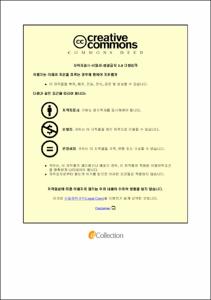원격 전이를 동반한 유방암 환자에서 항암 치료 시작 후 호중구-림프구 비율 변화의 예후 인자로서의 가치
- Abstract
- 연구 배경
4기 유방암 환자의 예후는 불량하며, 치료에 대한 반응 예측이 어렵다. 그래서 우리는 고식적 항암 화학 요법 전후에 호중구-림프구 비율(NLR)의 변화가 예후 인자로서의 가치가 있는지 조사하였다.
연구 방법
우리는 4기 유방암 환자 중 초기 치료로 고식적 항암 화학 요법을 시행 받고, NLR 값을 모을 수 있는 환자 218명을 대상으로 연구 진행하였다. NLR 값은 진단시와, 첫번째 항암 화학 요법 후의 값을 추출하였고, 암 특이 생존과의 연관성을 분석하였다.
연구 결과
대상 환자의 평균 연령은 47.2세이며, 추적 기관의 중앙값은 29.8개월이었다. 평균 초기 NLR과 NLR 변화값은 각각 2.83±2.19, 0.39±3.74로, 우리는 이 값을 기준값으로 정하였다. 유의한 차이를 보이지 않은 초기 NLR군별 분석 (p = 0.431)과 달리, NLR 변화에 따른 암 특이 생존률에는 통계적으로 유의한 차이가 나타났다 (p = 0.031). 치료 후 NLR 값이 증가한 군의 1, 3, 5년 암 특이 생존률은 78.4%, 35.4%, 20.8% 였고, 변화없거나 감소한 군에서의 생존률은 88.9%, 52.6%, 27.1% 였다. 다변량 분석에서 NLR 변화는 독립적인 예후 인자로 나타났다. (위험도 = 1.748, 95% 신뢰 구간 = 1.084 – 2.818) 초기 NLR과 NLR 변화의 조합을 분석한 결과, 높은 초기 NLR에서 치료 후 증가한 환자는 낮은 초기 NLR에서 감소하거나 변화 없는 환자보다 불량한 예후를 보였다. (위험도 = 4.294, 95% 신뢰 구간 = 1.586 – 11.629)
연구 결론
초기 NLR 단독은 4기 유방암 환자의 예후 인자가 아니었다. 고식적 항암 화학 요법 후 NLR이 증가한 환자는 더 불량한 예후를 보였다. 초기 NLR 값이 높고 치료 시작 후에도 증가한 NLR 값을 보인 환자는 치료에 불응하는 환자일 수 있을 것이다.
|The prognostic value of Neutrophil-Lymphocyte ratio(NLR) change after initiation of chemotherapy in de novo stage IV breast cancer patients
Background
The de novo stage IV breast cancer has poor prognosis, predicting response to treatment in the affected patients is difficult. We investigated whether the initial neutrophil to lymphocyte ratio (NLR) at diagnosis and NLR change after the first palliative chemotherapy cycle can be a prognostic indicators.
Methods
We retrospectively reviewed 218 de novo stage IV breast cancer patients with available NLR values who underwent palliative chemotherapy as an initial treatment. We analyzed cancer specific survival (CSS) according to initial NLR (iNLR), NLR change after the first chemotherapy cycle (ΔNLR), and a combination of these two.
Results
The mean patient age was 47.2 years; the median follow-up period was 29.8 months. The mean iNLR and ΔNLR values were 2.83 ± 2.19 and 0.39 ± 3.74, retrospectively, amd were used as cut off points. There was no significant difference between low and high iNLR groups (p = 0.431); however, there was a significant correlation between ΔNLR and CSS (p = 0.031). The 1-, 3-, and 5- year CSS rates of patients in the increased ΔNLR group were significantly lower than those of patients in the stationary or decreased group. (78.4%, 35.4%, 20.8% vs 88.9%, 52.6%, 27.1%; p = 0.031). Multivariate analysis suggested that ΔNLR was an independent prognostic factor (hazard ratio (HR) = 1.748, 95% confidence interval (CI) = 1.084 - 2.818). The analysis of the combination of iNLR and ΔNLR showed that patients in the high iNLR and increased ΔNLR group had poorer prognosis than those in the low iNLR and stationary or decreased ΔNLR group (HR = 4.294, 95% CI = 1.586 - 11.629).
Conclusion
Initial NLR alone was not a prognostic indicator among de novo stage IV breast cancer patients. However, patients with increased NLR after palliative chemotherapy exhibited worse CSS. Patients with high initial NLR and increased NLR after treatment might be a non responder to treatment.
- Issued Date
- 2019
- Awarded Date
- 2019-08
- Type
- Dissertation
- Alternative Author(s)
- Hae Na Shin
- Affiliation
- 울산대학교
- Department
- 일반대학원 의학과의학전공
- Advisor
- 안세현
- Degree
- Master
- Publisher
- 울산대학교 일반대학원 의학과의학전공
- Language
- eng
- Rights
- 울산대학교 논문은 저작권에 의해 보호받습니다.
- Appears in Collections:
- Medicine > 1. Theses (Master)
- 파일 목록
-
-
Download
 200000219217.pdf
기타 데이터 / 327.26 kB / Adobe PDF
200000219217.pdf
기타 데이터 / 327.26 kB / Adobe PDF
-
Items in Repository are protected by copyright, with all rights reserved, unless otherwise indicated.